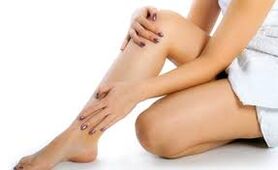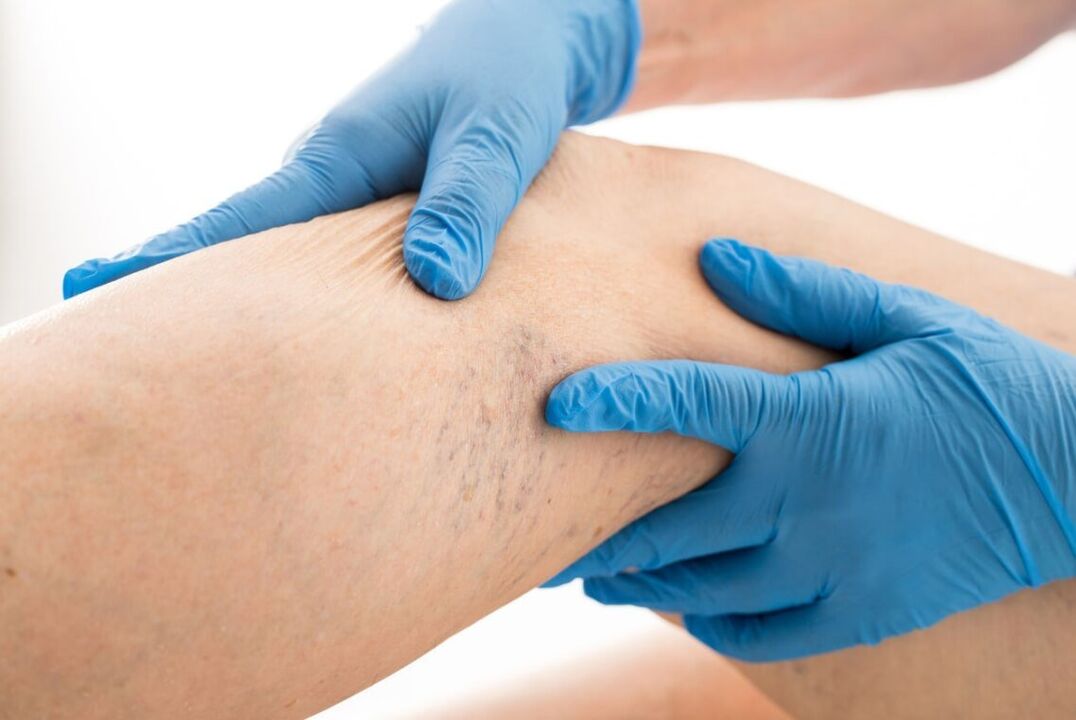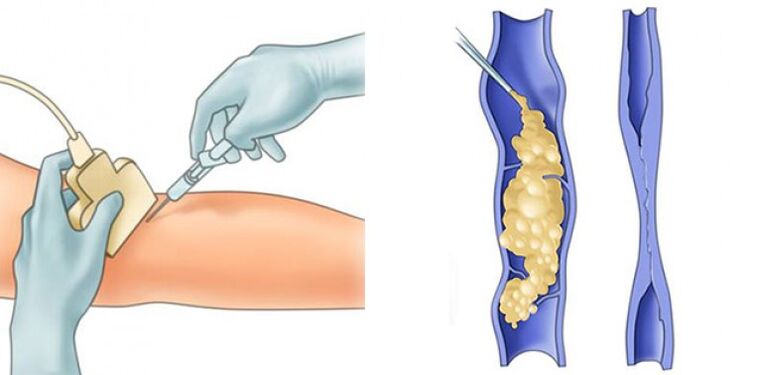Risk factors for the development of varicose veins
- Heredity.
- Pregnancy is traditionally considered as one of the main risk factors for developing varicose veins, more frequent (3-4 times) damage to women.
- Obesity is a proven risk factor for varicose veins.At the same time, an increase in the body weight index to 27 kg / m2 and more leads to an increase in the frequency of the disease by 33%.
- The lifestyle has a significant impact on the development and the course of varicose veins.In particular, the negative effect of prolonged static loads with lifting weights or a motionless stay in a standing and seated position has been proven
- During varicose veins, nearby underwear, various corsets that increase intra-abdominal pressure has negative effects.
- The high frequency of varicose veins in industrialized countries is to a certain extent due to nutritional characteristics.A high degree of food processing and reducing raw vegetables and fruits has led to a constant deficiency in the vegetable fibers necessary to reshape the venous wall and chronic constipation, which leads to a permanent increase in intra-abdominal pressure.
- Heavy conditions are involved in the pathogenesis of varicose veins.Their role in recent years has gradually increased, which is due to the broad use of hormonal means of contraception, the popularization of hormone hormone therapy during the occurrence of menopause and the treatment of osteoporosis.It is proven that estrogens and progesterone, as well as their derivatives, reduce the tone of the venous wall due to the progressive destruction of collagen and elastic fibers.

Clinical image of varicose veins
Varicose veins-It's a disease that is not indifferent to beautiful sex.The varicose veins of female veins are sick on average three times more often than men.
Signs of varicose veins- Established extensions of the subcutaneous veins, pain, heaviness in the legs, swelling of the foot and the bottom of the leg, fatigue in the legs at the end of the day.Varicose nodes are often subject to the formation of blood clots and infection.Phlebitis can develop - inflammation of blood vessels orthrombophlebitis- Inflammation of the vessels complicated by blood clots.During the veins, there are hard and very painful cords.The skin changes, loses its elasticity and its color becomes dense and dark brown.With an easy injury, ulcers occur.A young woman can become a disabled person at the age of 40.
One of the serious complications of varicose veins is thrombophlebitis - a process in which a thrombus with subsequent inflammation is formed on the inner wall of the vein.This pathology is dangerous insofar as the blood clot can flow with the flow of blood to enter the pulmonary artery (tel - the thromboembolism of the pulmonary artery) and lead to the death of a person.This is why varicose veins are a dangerous disease that must be treated.
Symptoms of varicose veins (these are the symptoms should make you be wary):
1. Pain.
The causes of pain in varicose veins are very, very numerous.A variety of pain in varicose veins is also very rich:
- Hot pulsating pain,
- Night cramps and itching in the muscles,
- Pain while walking
- Pain along the venous trunks,
- General pain and lymaire in the legs
2. Swelling in the legs.
3. A feeling of bursting and gravity in the legs.
4. Changes in the skin.At the beginning, the skin becomes dry, pigmentation appears - the skin of the legs darkens, covered with brown "spots".Later, various dermatitis, eczema and trophic disorders so called in the form of poorly healing injuries until the formation of ulcers can reach these symptoms.
5. A elongated and elongated varicose varicose varicoseum beyond the surface of the skin of the legs and feet, with cylindrical or mixed extensions.
6. Vascular stars (telangioectasia).Yes, people with varicose veins are also included in the group of patients with the expansion of small veins, because the causes of their appearance are the same.
The first stages of varicose vein development are very difficult to detect and diagnose, because in the first stages of the disease, there is no main characteristic - varicose veins.And the first and first symptoms of varicose veins, such as the feeling of the severity of the legs, moderate legs of the legs, increased fatigue, are also found with the initial stages of arterial diseases, flat feet, lumbar osteochondrosis.In such difficult cases, it is impossible to make the right diagnosis itself - you will need a consultation of a doctor or even several specialists - a phebologist, a neurologist, a surgeon and a manual therapist.High instrumental diagnostic methods, such as ultrasound, will also be necessary.
In phlebology, such symptoms are associated with the start of the pathological blood flow through deep veins.
Most often, women notice the first signs of varicose veins in the spring, when you can change the wardrobe, but we do not know where the venous "patterns" on the legs, legs and hips came.The leg is distorted, becomes blue and ugly.
The very first symptoms of varicose veins of the legs, along which you can suspect the start of varicose veins, is an increase in the venous pattern on the skin of the legs.This defect, as already indicated, is most often noted by young women: on the legs or hips, they notice crowns, which were not there before.
And often, such symptoms of a beginning varicos disease precede the appearance of pain and other unpleasant sensations.Often, the first "discoveries" of veins are not accompanied by not being unpleasant.
Women are only worried about this vascular net as a cosmetic defect.These patients are often if they turn to specialists, only then to eliminate aesthetic discomfort.
If you have slim and pale skin, the first symptoms of beginners are particularly clearly visible.These are thin veins that do not even protrude above the surface of the skin.The first symptoms of varicose veins may also look like a network of thin vessels thin under the skin.
There may not be other complaints at the start of varicose veins.
The beginning of development and the progression of varicose veins is already manifested by nodes of varicose veins exceeding above the surface of the skin - one or more.This is the main symptom of beginner varicos disease.
Varicose nodes can be detected most often on the inner surface of the legs or hips.With a long step or a prolonged position, such a symptom of varicose veins such as fatigue, the gravity of the legs, a feeling of burst (often in calves) manifests itself.These symptoms are particularly clear with an extended stay in a sitting or standing position.There are also painful or acute pain in places of varicose veins (dilated veins), convulsions in the muscles of the calf, especially in the evening, and sometimes at night.The first signs of dysfunction in the veins are also manifested by swelling of the legs until the end of the day.Edema generally occurs in the evening, especially after a prolonged position.After night, swelling disappears completely.
These symptoms of expansion varicose veins quickly pass, if you relax, especially if you lie down.However, the disappearance or a significant decrease in these symptoms when walking and after night rest are very characteristic of the symptoms of varicose disease.
But the varicose veins, if they are not seriously committed, do not withdraw, progress.Over time, such symptoms of varicose veins appear as convincing dark blue intradermal veins, exceeding above the surface of the skin of the legs and feet and similar to the clusters of a very mature red grapes.All this is accompanied by painful pain in the legs and calves, a feeling of warmth in the legs, night convulsions in the muscles of the calf, swelling.Little by little, skin changes join these symptoms.At the beginning, the skin becomes dry, it darkens, a pigment appears on it - the brown spots.A little later, the so-called trophic disorders begin to join: poor healing explosions and even ulcers.
The pain begins to disturb more and more often, especially in the afternoon or evening.

Varice treatment
There are many approaches to the treatment of varicose veins, but today the most effective treatment method is surgery -Venenectomy.Drugs and compression therapy are used as auxiliary methods in surgical treatment, and as independent methods in the initial stages of varicose veins and the presence of contraindications for surgical treatment.
The treatment of varicose veins must be complex and individual, most often includes a combination of conservative and surgical treatment.
Types of varicose vein surgical treatment:
- Classic phleectomy
- Laser coagulation
- Combined method
For the treatment of varicose veins, modern medicine uses laser surgery (EVLC).This method involves intravascular laser coagulation.EVLC- An intravascular laser is an advanced method to treat varicose veins.Laser exposure is a procedure that takes an intermediate position between non-surgical and surgical methods for the treatment of the disease.
DignityEVLC- This is a way of radical but weak-traumatic treatment.After such procedures, the patient can leave the clinic after a few hours, being in good physical condition.Such treatment is carried out under operating conditions and using local anesthesia.
The most modern laser devices are currently used.At the same time, the problematic areas of the patient are exposed to a laser with an optimal wavelength (1470 Nm).The radial light used provides a reliable closure of the vein.In this case, there are no side effects and the surrounding tissues do not heat up.This is why after such an operation, the number of bruises is reduced and the postoperative period passes easily and painless.
The operation is not accompanied by cuts, does not leave pigmentation and scars.After 3 weeks after surgery, the patient's legs acquire a normal aspect without varicose nodes.Such treatment of varicose veins has spread in Western countries.For large varicose veins, the EVLC is used in combination with microphleectomy.This allows you to get a good aesthetic result.

Advantages of the use of EVLC:
- Rapid recovery
- Trauma
- High cosmetic effect
- Lack of marks on the skin of varicose veins from a distance
- Treatment is carried out under local anesthesia (tubecent anesthesia)
- Lack of pain syndrome
- High therapeutic effect
Possible complications
Treatment with a laser technique has practically no complications.Rare complications include burns, the probability of venous thrombophlebitis and paraesthesia in the operated area.However, experienced phlebologists guarantee a qualitative result.
These operations do not violate the patient's lifestyle.After the intervention, it is necessary to wear compression stockings in order to provide slight pressure on the veins.Special products are applied to the nodes area of particularly large varicose veins - cotton rolls or latex pads.After the laser procedure, the patient is recommended to walk around daily.
The treatment of varicose veins with a laser ensures the preservation of the capacity of work and physical activity.























